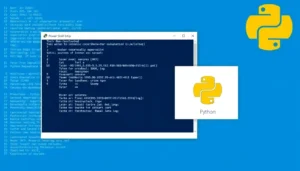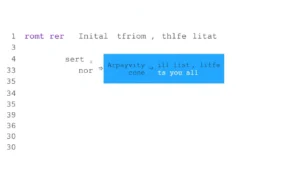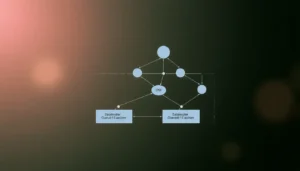Nvidia DRIVE Thor and the Road to Embodied AI in Automotive Innovation
- THE MAG POST

- Sep 6
- 8 min read

Nvidia DRIVE Thor marks a turning point in automotive AI, uniting advanced silicon with an integrated software stack to redefine how we think about autonomous mobility. In this era of rapid AI-enabled transformation, hardware-software co-design is no longer a luxury but a necessity for safe, scalable self-driving systems. This article examines how the DRIVE THOR platform, alongside DriveOS and allied partners, accelerates on-vehicle compute, refines perception and planning, and opens new revenue and safety opportunities for automakers and suppliers. The journey from lab prototypes to production-ready systems is reshaping the economics of mobility.
The hardware backbone: Nvidia DRIVE Thor and the full-stack approach
In a world where autonomous systems hinge on a precise fusion of hardware and software, the Drive Thor platform stands as a pivotal milestone, signaling a decisive shift toward production-ready, on-vehicle intelligence. The aim is no longer merely to run algorithms but to sustain reliable perception, planning, and actuation under real-world constraints. This section dissects how the Thor family redefines compute density on wheels, why a tightly integrated software stack matters, and how safety, scalability, and manufacturability converge in a single, coherent platform.
Thor-empowered compute in vehicles
The heart of Nvidia’s automotive ambition rests on Thor chips that push high-performance AI inference directly into the vehicle. By delivering dramatic gains in throughput per watt, the Thor family enables more sophisticated perception and decision-making without sacrificing efficiency. This is not a mere upgrade; it is a rearchitecting of the in-car compute model, enabling richer sensor fusion, faster loop rates, and more robust fault tolerance in complex urban environments.
Because compute is plentiful at the edge, automakers can deploy deeper neural networks for object recognition, semantic segmentation, and predictive planning without the latency penalties of cloud-round trips. The result is a tangible increase in safety margins and a smoother user experience, from lane-keeping to nuanced path planning in dynamic traffic. The shift also accelerates time-to-market as software teams can prototype, validate, and scale features within a single hardware-software ecosystem.
DriveOS: software that complements silicon
Software is the other side of the equation, with DriveOS providing a unified runtime that orchestrates perception, localization, and control atop Nvidia’s silicon. This integration reduces fragmentation across vehicle platforms, enabling automakers to push updates, refine models, and deploy new capabilities with greater confidence. The ecosystem approach also fosters collaboration with semiconductor vendors, Tier 1s, and software developers, creating a more resilient supply chain and faster iteration cycles.
DriveOS emphasizes safety through modular validation, formal verification techniques, and rigorous simulation. By aligning software releases with hardware capabilities, Nvidia helps ensure that new autonomy features perform as intended in real-world scenarios, mitigating edge-case failures and maintaining stable performance as the car learns from an expanding dataset.
Safety, scalability, and production readiness
The production-readiness narrative centers on reliability, determinism, and verifiable safety. Thor-based systems are designed with redundant compute paths, robust fault handling, and clear telemetry, enabling engineers to monitor health and performance across the vehicle’s lifecycle. This focus translates into demonstrable reductions in risky handoffs, improved redundancy for sensor fusion, and more predictable behavior in challenging weather or dense urban traffic.
Scalability follows a similar logic: a single, coherent stack can power everything from compact city vehicles to larger autonomous shuttles, enabling harmonized software updates and shared development tooling. The broader implication is a more sustainable business model for automakers and suppliers, where hardware economies of scale meet modular software, reducing integration friction and accelerating the route from pilot programs to mass deployment.
From data centers to the road: Nvidia's auto business momentum
Momentum in Nvidia’s automotive division extends beyond the lab bench, reflecting a rigorous translation of research into revenue and real-world deployments. The company has reported meaningful growth in its auto segment, underscoring a broader shift toward embedded AI that travels with the vehicle, not just the data center. This progression signals a durable demand for end-to-end systems that blend compute, software, and sensors into a cohesive automotive platform.
Revenue signals: a 69% jump in auto segment
The automotive business has seen a substantial year-over-year uplift, driven primarily by demand for self-driving solutions and related software capabilities. This growth is not incidental; it reflects a deliberate strategy to monetize on-vehicle AI through scalable compute platforms, developer ecosystems, and continuing software enhancements that expand the scope of autonomous capabilities across vehicle tiers.
As production ramps accelerate, Nvidia’s automotive revenue cadence offers a lens into how OEMs and suppliers value robust, sleep-mode-free autonomous functionality. The result is a more predictable, multi-year growth trajectory that aligns with the broader AI-enabled mobility trend, even as the market negotiates regulatory and safety considerations.
Strategic partnerships and ecosystem
Collaborations with major automakers—such as Toyota and Mercedes-Benz—illustrate the platform’s broad appeal and practical viability. These partnerships help accelerate validation cycles, standardize interfaces, and create a shared roadmap for deploying advanced driver-assistance features and higher levels of autonomy. The ecosystem approach reduces bespoke customization, enabling faster rollouts and more consistent performance across fleets.
Beyond vehicle manufacturers, Nvidia’s collaborations extend to suppliers and technology partners, reinforcing a network-driven model where software updates and safety certifications travel with the car, not the dealer. It’s a shift from bespoke, one-off integrations toward scalable, repeatable deployments that benefit the entire mobility value chain.
Hardware serving other automakers
The reach of the platform extends to multiple brands and regions, illustrating the cross-pollination of AI, robotics, and automotive engineering. The same DriveOS and Thor hardware can support diverse architectures, sensor suites, and regulatory regimes, allowing automakers to tailor features to local constraints while maintaining a shared codebase and safety framework. In this way, Nvidia’s approach lowers integration risk and accelerates innovation across the industry.
As the fleet grows and data accumulates, the value of these shared platforms compounds. Vehicle data streams feed improvements that benefit all partners, creating a virtuous cycle where safer AV capabilities, better perception, and more reliable planning loops reinforce each other across brands and market segments.
Embodied AI in action: vision, language, and autonomy
The convergence of vision, language, and model architecture marks a new frontier for embodied AI in mobility. Nvidia frames this as a holistic, in-vehicle intelligence stack where perception, decision-making, and control are tightly coupled with real-time sensor inputs. The net effect is a more responsive, context-aware driving experience that can adapt to new scenarios with minimal latency.
Vision systems driving perception
In-vehicle perception relies on high-fidelity vision models capable of recognizing objects, predicting trajectories, and maintaining situational awareness under adverse conditions. The on-chip compute provided by Thor-based platforms supports deeper segmentation, robust tracking, and sensor fusion across cameras, LiDAR, radar, and other modalities. The net effect is a clearer, more reliable understanding of the driving environment, which underpins safer, more autonomous behavior.
Improved perception feeds directly into planning and control, enabling smoother maneuvers and better adherence to safety margins. This layer of fidelity is essential when navigating complex traffic patterns, construction zones, or crowded urban cores where split-second decisions matter.
Language-guided planning and control
Beyond visual inputs, embodied AI increasingly leverages language models and structured reasoning to interpret human intent, interpret maps, and generate explainable driving plans. Such capabilities facilitate more intuitive interfaces for passengers and enable advanced remote assistance, diagnostics, and arbitration in ambiguous situations. The challenge lies in maintaining real-time responsiveness while balancing safety constraints and user expectations.
Embedding language-aware planning within the DRIVE stack also supports higher-level autonomy features, such as mission planning in ride-hailing contexts, navigation that accounts for dynamic constraints, and cooperative maneuvers with human-driven vehicles. The result is a more adaptable system that can respond to evolving scenarios with better context and fewer unnecessary hesitations.
Real-world deployment and safety implications
Deployment realities demand rigorous testing across simulated and real environments, with transparent safety metrics and verifiable performance. The embodied AI approach emphasizes continuous validation, with telemetry and fault-detection mechanisms that allow operators to monitor, debug, and refine behavior over time. This disciplined approach helps align deployment with regulatory expectations and public trust.
As automatic driving features mature, the industry increasingly emphasizes predictability and explainability. The integration of perception, planning, and control within a unified stack reduces cross-component uncertainty and supports safer handoffs between automation levels, even in edge cases that previously challenged autonomous systems.
Industry implications: competition, regulation, and opportunity
The rapid convergence of hardware and software for autonomous mobility reshapes competitive dynamics, regulatory expectations, and commercial opportunities. With a scalable, security-conscious platform, Nvidia helps set a high bar for performance, safety, and interoperability, while inviting collaboration across automakers, suppliers, and tech providers. This ecosystem approach shapes where investment flows and how new revenue streams emerge in the mobility sector.
Regulatory landscape and safety standards
Regulators increasingly demand rigorous validation, traceable safety processes, and robust incident reporting for autonomous systems. A unified, auditable stack simplifies compliance by providing standardized interfaces, clear telemetry, and consistent certification pathways. The emphasis on safety-by-design also promotes public trust and accelerates broader adoption of autonomous features in consumer vehicles and commercial fleets.
Standards organizations and industry coalitions are likely to converge on shared benchmarks for perception accuracy, decision latency, and fault tolerance. Companies that align with these benchmarks early can reduce time-to-market and avoid costly retrofits as regulations evolve.
Market opportunities and risks
The shift to embodied AI unlocks new revenue models, from software subscriptions and over-the-air updates to data-driven services and fleet optimization. Automakers can monetize enhanced safety features, driver-assistance capabilities, and autonomous operations, creating recurring revenue streams alongside hardware sales. However, risk remains around data privacy, cybersecurity, and the competitive race to secure essential AI IP and compute capacity.
Strategic collaborations, robust security architectures, and transparent governance will be critical as automakers navigate these opportunities. Firms that invest in modular, interoperable platforms stand to gain the most from rapid progress in perception, planning, and control technologies.
Key Takeaways
What to watch next for automakers
Automakers should monitor the maturation of full-stack AI platforms that fuse high-density edge compute with coherent software ecosystems. The emphasis will be on safer, more reliable autonomous features, faster deployment cycles, and scalable architectures that support multiple vehicle tiers and regions.
Strategic collaborations will be pivotal, as standardized interfaces and shared safety certifications reduce integration risk and accelerate time-to-market for new autonomy capabilities.
What developers should know
Developers benefit from a unified framework that enables rapid iteration, rigorous validation, and easier updates across a vehicle’s lifecycle. Emphasis on safety, telemetry, and explainability will guide best practices and governance as systems grow more capable and complex.
Investing in cross-disciplinary expertise—combining AI, robotics, and automotive engineering—will be essential to advance embodied AI responsibly and effectively.
Consumer implications
For consumers, the evolution translates into safer, more capable driver-assistance features and more intuitive interaction with autonomous functions. The broader adoption of production-ready AI in vehicles promises improved reliability, better safety outcomes, and new mobility services that adapt to user needs while maintaining stringent safety standards.
Aspect | Summary |
Hardware & Software Stack | Nvidia DRIVE Thor chip, DriveOS, and full-stack architecture powering AV systems. |
Auto Business Momentum | 69% YoY growth in automotive segment in Q2 of fiscal 2026; partnerships with Toyota, Mercedes, Volvo, BYD, Foxconn. |
Embodied AI | Vision, language, model architecture advancements enabling higher autonomy levels. |
Industry Implications | Regulation, safety standards, new revenue opportunities, ecosystem dynamics. |
Key Takeaways | Strategic bets on full-stack AI for mobility, potential trillion-dollar impact. |
From our network :
Mastering Programming Languages: A Strategic Approach to Learning
Retrieving the 50 Most Recent PostgreSQL Sessions: A Troubleshooting Guide
Efficient SQL Server Stored Procedures: Handling Multiple IDs
Understanding Open and Closed Intervals: Definitions and Examples
1.5°C Climate Threshold Breached: Urgent Action Needed to Curb Global Warming






















































Comments